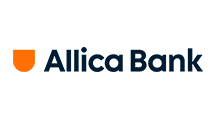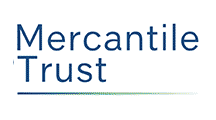Can I get finance for flipping property?
Yes, you can get finance for flipping property. The product you can use is a bridging loan. A bridging loan is suitable because 1) it is a short-term financial solution 2) it allows you to buy uninhabitable property and 3) it can be used to fund renovations.
You will need a deposit of at least 25% of the property value, but you can borrow up to 100% of the build costs. So, if you only have funds set aside to buy the property you want to flip, and not money for the renovations, this can be very advantageous.
Factors that may impact you getting finance for flipping property
- Some types of adverse credit
- Not having enough money for a deposit
If you have questions, chat to our advisors on live chat, via the phone, or get a call-back we're here to help.
Today's bridging loan rates
You can use our bridging loan calculator to compare today’s rates for finance to flip property.
Eligibility for a bridging loan to flip houses
- First time buyers to experienced landlords
- You must be over 18 years old
- Minimum deposit 20% of the property value
- Upper age limits at application are flexible
- Low personal incomes are accepted
- Property, pension and employment income is OK
Ready to get started?
Your personal advisor will call. Direct lines start 01603. Get today's rates, help, or apply. Lender terms provided in as little as two hours!
What is involved with flipping houses?
Flipping houses involves buying property, renovating and selling it on for a higher price.
Flipping houses can be a good way to make money, but it can also be risky, because it costs money to fix up the property, and there is no guarantee that it will sell for a higher price. It is important to do research and figure out what changes will make the property more valuable and attractive to potential buyers.
Some people flip property as a hobby, but others do it as a business. It requires a lot of hard work, time, and patience, but the payoff can be very rewarding.
Commercial Trust can help you secure the money you need for flipping property. The product you can use to borrow for this reason is called a bridging loan.
Using a bridging loan to flip houses
Bridging loans can be a good option for people who want to buy property and sell it quickly for a profit, but they do come with some risks. It's important to carefully consider all of the pros and cons.
If you are just getting started with flipping houses, these are the key steps involved:
- Learn about the process: To start flipping houses, you first need to learn about the process. This involves understanding how the market works, what type of houses are good for flipping, and how to renovate a house.
- Get your finances in order: Flipping houses requires money to get started, so it's important to have your finances in order. You can borrow up to 80% of the value of the property you want to buy with a bridging loan. However, borrowing at 70%-75% of the property value is more common.
- Find a property: Once you have your finances in order, it's time to find a property to flip. Look for properties that are in need of some work, but are still in a good location. You can find properties through estate agents, auctions, or by driving around and looking for "For Sale" signs.
- Renovate the property: Once you have a property, it's time to start renovating. This may include renovating the kitchen and bathrooms, repainting, or adding new flooring. You may need to hire contractors to help with the renovations. If you are familiar with this type of work, you can do some of the work yourself to save money.
- Sell the property: Once the renovations are complete, list it for sale with an estate agent or sell it on your own. Be sure to price it correctly so that you can make a profit.
- Repeat the process: Once you have sold your first flipped property, you can use the money you made to start the process all over again. The more houses you flip, the more money you have the potential to make.
For more information, you can read our guide on flipping houses. Or get straight in touch with our experts to discuss a bridging loan.
We work with a wide range of lenders who fund flipping houses, including:
Why choose Commercial Trust?

Apply with ease by phone
It couldn't be easier to secure a loan for flipping houses with our expert advisors. Ask all your questions and arrange an application on the phone from your sofa.
World class customer service
We'll find you a great deal and take all the admin work off your shoulders, so you can relax while we get your loan completed. All the while giving you progress updates.
Lender decision in 2 hours
By contacting you by phone and email you can get help more quickly than in-person services. It's possible to get you a lender decision in principle in as little as two hours after our call.
We can help you with...
- Getting a loan to buy property at auction to flip
- Using a loan to refurbish uninhabitable property
- Buying a property below market value
- Borrowing up to 80% LTV, or more with extra security
- Borrowing over 3 to 24 months
- Investing in private name or via a limited company
- Repaying the loan monthly (serviced loan)
- Repaying the loan at the term end (retained loan)
- Borrowing with a low personal income
- Getting a loan that is flexible on affordability
Costs involved in a bridging loan for flipping houses
Lenders may charge you for the valuation conducted on your property. They often also charge a product fee, sometimes this can be added to the loan.
You will need a conveyancing solicitor who will charge fees. Read our guide to choosing a conveyancing solicitor.
We charge a broker fee for our work. You pay in two parts. A booking fee, once we have found you a mortgage deal, at application. The majority of our fee is paid at completion of the loan.
Bridging loans either come with monthly payments,this is called a serviced bridging loan, or you pay all interest at the end of the term, this is a retained bridging loan.
How to apply for a loan for flipping houses
1
Tell our advisors about the property you are investing in, your needs and circumstances. If you have credit concerns, chat to us about them, so we can put you with the right lender.
2
Your advisor will find the best possible deal from a search of thousands of products. They will get you a lender decision in principle, this requires a soft credit search (occasionally it is a hard credit search).
3
Your advisor will call to discuss the product they have found for you. You will be presented with one bridging loan, which is the best match for all your needs and offers you the most cost effective option.
4
On your instruction, your advisor will submit your bridging loan application. Your account manager then does all liaison and administrative work to complete the deal, whilst keeping you updated at every step.
What our clients say about us
Frequently asked questions
Yes, this is a very common method of investing in property. It has advantages and disadvantages, so research is key. Read our guide to flipping houses.
If you don’t have the cash to cover the full buying price of a house you want to flip, a bridging loan is a suitable way to borrow up to 80% of the property value. While you can borrow up to 80% loan to value (LTV), there are more lenders available at 70%-75% LTV.
The key to flipping property is to make money from doing it. This means paying as little in costs as possible and selling the property for as much as possible, so that you make a good profit.
You may be able to find a cheaper, below market value property, if you build up good relationships with estate agents, or you buy property at auction.
When you renovate a property, do as much work as you need to increase the property value, but don’t spend excessive amounts on updates that will not increase the value of the property. Don’t assume a piece of work will increase saleability or value, without checking with a professional.
Ultimately, it will be important to seek professional advice in any subject involved in flipping property that you are unsure of.
Flipping a house has 3 key stages. Buying the property, renovating the property and selling the property.
Buying a house to flip, if you have cash, is as fast as the negotiations and legal work takes to complete. If you are borrowing money using a bridging loan, these are also much faster than a mortgage to arrange, and are particularly suited to flipping houses, as they are a short-term lending option.
The timeframe required to renovate a house you are flipping depends on the amount of work needing to be done. If the works are minimal, you may only need the services of a builder and painter and decorator.
If there is more structural work to be done, you may need an architect and to secure planning permission, as well as the services of a builder and others.
The outcome of a planning application is typically decided within 8 weeks, but complex cases can take up to 13 weeks. Anything over this and you can make an appeal to the planning authority processing your case. If you can achieve updates to a property to achieve a profitable outcome, without needing planning permission, this is likely to make the process easier for you, as it eliminates this step.
Selling a property can take on average 2-3 months. As someone flipping property, you will want to make as much as you can, to achieve a good profit. But, you don’t want to over-price a property, so that it struggles to sell.
If you are inexperienced or new at flipping houses, taking on a more straightforward project may make you less than a more complex scenario, but it may mitigate some of the risks complex house flipping can involve.








